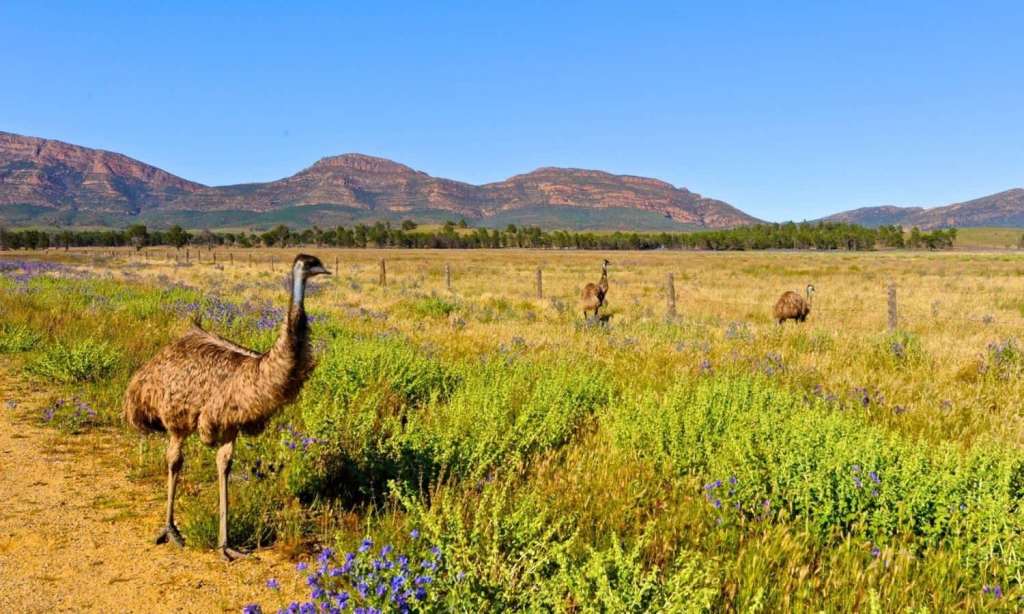NAIDOC week runs from July 4 to 11, and is recognised every year by Australians from all walks of life.
This year’s theme, ‘Healing Country’, is designed to recognise the history and cultures of Aboriginal and Torres Strait Islander peoples, and provides the opportunity for travellers to have a newfound appreciation of, and connection to, Australia’s history and Country.
This NAIDOC week, there are hundreds of experiences across Australia to immerse yourself in. For the ultimate inspiration, Tourism Australia has collated this list of cultural experiences to enjoy this NAIDOC week, all across Australia.
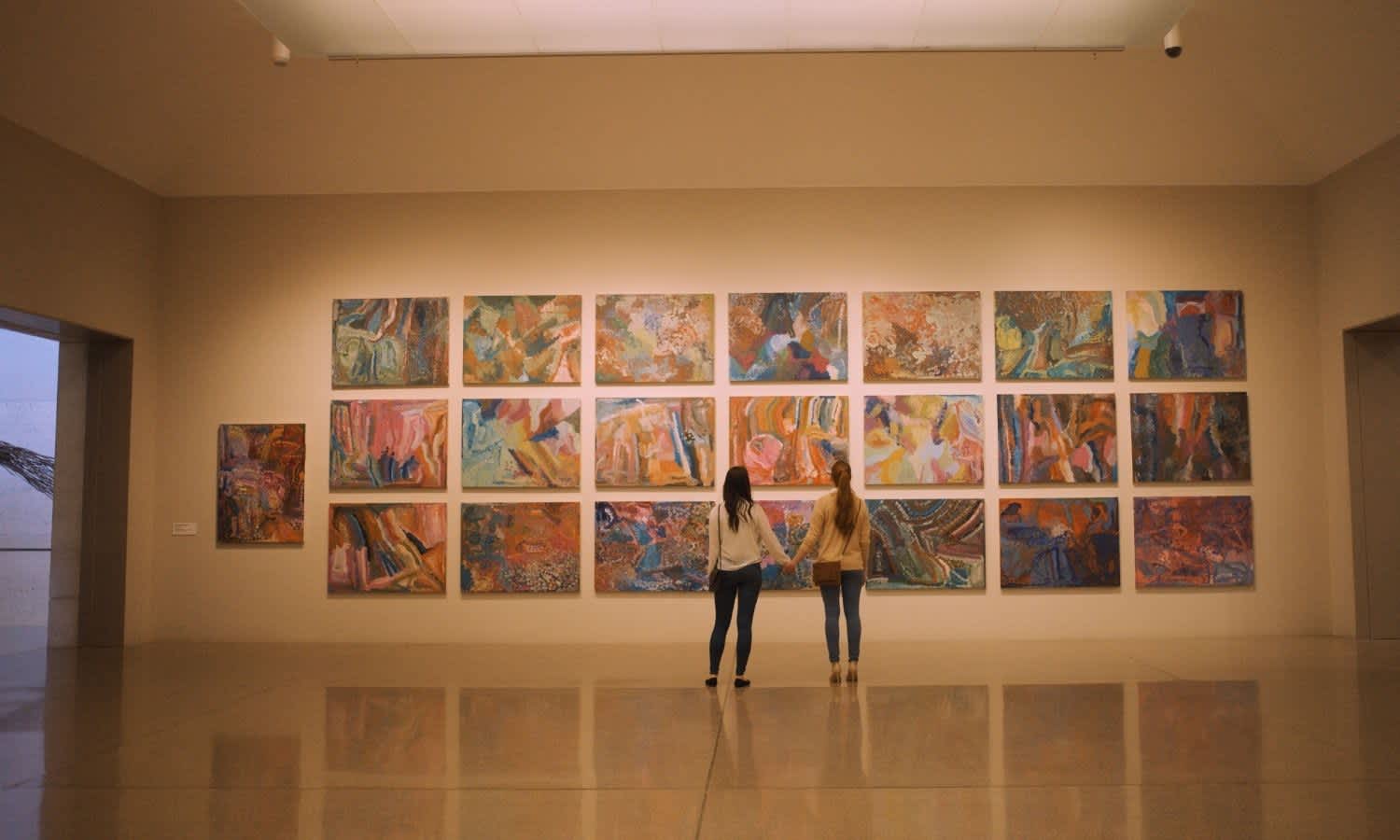
Australia Capital Territory
Canberra – Ngunnawal, Ngunawal and Ngambri Country
The Ngunnawal, Ngunawal and Ngambri peoples have lived on the country that is now known as the Canberra region and are the Traditional Custodians of the land.
Burrunju Art Gallery
Specialising in original, handcrafted arts and crafts and exhibitions featuring local Aboriginal artists, the Burrunja Art Gallery is a not-for-profit gallery that showcases independent artists whilst also offering workshops.
Aboriginal Dreamings Gallery
For visitors to Canberra looking to purchase a new piece of artwork, this gallery displays a stunning collection of Indigenous art, gifts and jewellery which can be viewed and purchased from its galleries in Gold Creek Village and sister gallery Artworld ADG in Canberra city centre.
National Gallery of Australia and National Museum
The National Gallery of Australia is home to the world’s largest collection of Australian Aboriginal and Torres Strait Islander art. After, visit the National Museum, where every day at 3pm members of the local Ngunawal and Ngambri peoples host a First Australian’s Indigenous Australia Tour.
Dhawura Aboriginal Cultural tour
Join a tour and you’ll be accompanied by a Ngunawal guide who will take you on a journey to find hidden rock art, identify historical artefacts, learn about “bush food” and traditional stone tools, and hear the stories attached to each of the significant local sites in Australia’s capital.
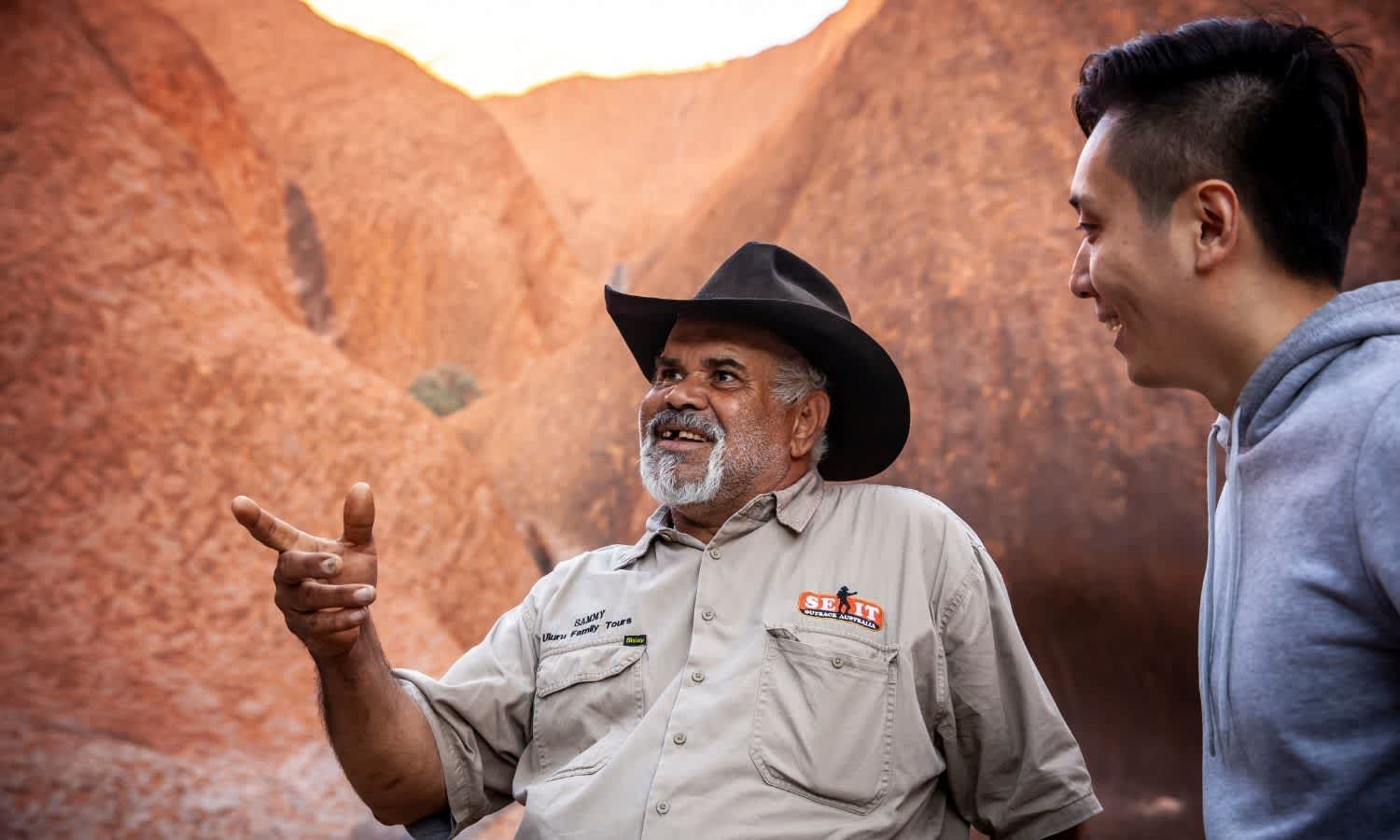
Northern Territory
Uluru, Kata Tjuta and the land around them have always been very special places. Recognised as a UNESCO World Heritage listing for both cultural and natural values, the Anangu (pronounced arn-ung-oo) are the Traditional Custodians. The Anangu welcome you to learn about their Tjukurpa (traditional law, stories and spirituality), ancestors and culture.
Walkatjara Art and Maruku Arts
Located in the Uluṟu-Kata Tjuṯa National Park Cultural Centre at the base of Uluṟu, the Walkatjara Art gallery is owned and directed by the Mutitjulu community of the Anangu people, the Traditional Owners of Uluṟu. The gallery is home to a range of vibrantly coloured creation stories painted by local artists and also offers visitors the opportunity to meet Mutitjulu artists at work in the studio. While you’re there, check out Maruku Arts, a second gallery that features works by Anangu artists of the wider Central Western Desert region. Maruku Arts offers a fun dot painting workshop that runs twice daily, taught by a local Anangu artist – perfect for all the family!
The Gallery of Central Art (GoCA)
The newly renovated GoCA in Uluṟu features around 80 artworks supporting existing and emerging artists from the Central Desert area. Designed to help artists achieve a more sustainable income stream, the gallery is known for its display of specially curated items like punu (traditional Anangu wood carving) and pieces designed and hand-made by communities across the region. Located adjacent Voyages Desert Gardens Hotel, it’s conveniently placed for all visitors to Uluṟu to visit.
SEIT’s Patji tour
Feel the scale of Central Australia’s rich culture, on a SEIT’s Patji tour, named after the Aboriginal land it explores, the tour takes visitors on an exclusive off-road adventure just south of Uluṟu. Travelling through Patji by 4WD with an Aboriginal guide, expect to learn about the cultural and historical significance of the area, as well as stories passed down for generations about how the Traditional Owners survived in this desert landscape.
Mt Borradaile in West Arnhem Land is still owned and managed by its traditional custodians, the Amurdak people, who have inhabited the area for 50,000 years.
Davidson’s Arnhemland Safaris
In the Northern Territory’s Top End in the West Arnhem Land you will find Davidson’s Arnhemland Safaris, which offers a rare opportunity to stay overnight at an Aboriginal sacred site. This remote eco-lodge is on a registered sacred site at Mt Borradaile in West Arnhem Land. Small-group tours from the ecolodge explore rock art sites, cruise billabongs, spot crocodiles, roam through rainforest and delve into catacombs to discover the country and culture of Mt Borradaile’s Traditional Owners, the Amurdak people.
Marking the point where the traditional lands of the Jawoyn, Dagoman, and Wardaman Aboriginal peoples converge, Katherine has been an important meeting place for Indigenous peoples for many thousands of years, and it remains so today.
Top Didj Cultural Experience & Art Gallery
Home to an extensive range of art, didgeridoos, artefacts, gifts and books, the gallery also offers morning and afternoon Aboriginal artist-led cultural experiences. Located in Katherine, three hours south of Darwin, the gallery displays an outstanding array of Jawoyn and Dagoman work, as well as further pieces from Arnhem Land, the Kimberley and the Central Western Desert.
The organisation also runs the popular Top Didj cultural experience, a two-and-a-half-hour session led by Aboriginal artist Manuel Pamkal. During the experience, Manuel Pamkal takes visitors on an enriching journey through local customs, hunting practices and art-making, giving visitors the opportunity to return home having painted their own work of art.
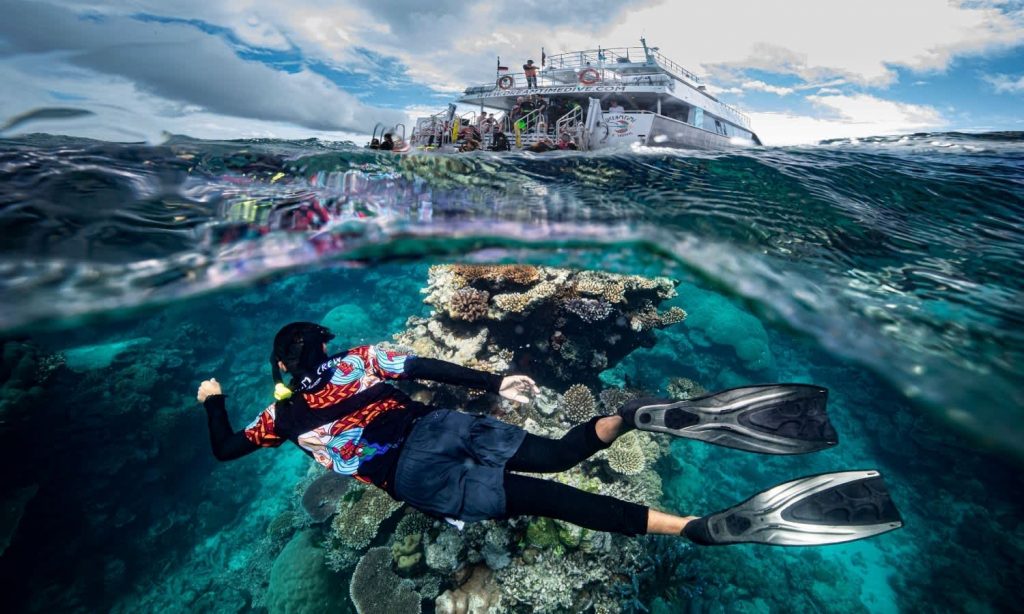
Queensland
Communities lived all along the Brisbane River, which provided for peoples’ livelihoods and also traditions. A great number of languages were spoken across the area we now know as the greater Brisbane region. In the region of the Brisbane CBD, the Yuggera language was spoken by the Turrbul and Jagera people.
Birrunga Gallery & Dining
Hidden away in Brisbane is one of the most interesting Aboriginal-owned and -operated art galleries in the country, Birrunga Gallery & Dining. Located in a slick basement space just five minutes’ walk from the central Queen Street Mall shopping district, this destination is a gallery, performance space, wine bar and café in one. Curated by Wiradyuri man Birrunga Wiradyuri, who is also the principal artist, the gallery houses his own haunting and thought-provoking work alongside pieces by accomplished Aboriginal and Torres Strait Islander artists. Those looking to grab a bite can also get lunch at the gallery’s café, which draws on native ingredients to create bush tucker with a modern twist – think emu burgers and kangaroo steak sandwiches!
Spirits of the Red Sand
Just a short 30-minute drive from Brisbane, the Spirits of the Red Sand Welcome to Country Daytime Experience allows guests to experience the world’s oldest culture in true ancient story-telling style. The experience has four stages designed to share elements of Aboriginal culture; from a Welcome to Country where visitors have the opportunity to take part in a Smoking Ceremony, didgeridoo playing, bush tucker tasking and spear throwing, and gaining an understanding of Aboriginal Dreamtime beliefs.
The Yidinji Yabanday (tribal land boundary) covered a large area from the Barron River in the north to the Russell River in the south, east to the Murray Prior Range and west to Tolga. The Yidinji people include eight clans who are the Traditional Custodians of the area. Gimuy is the traditional place name for the city of Cairns.
Janbal Gallery
Visitors to Cairns looking for an interactive Indigenous experience should visit Aboriginal-owned Janbal. Home to an impressive range of Aboriginal artefacts, including didgeridoos and jewellery handmade by artisans from across Tropical Northern Queensland, the gallery also encourages guests to ask questions about the artists and get their hands dirty at their creative workshops. Owner Brian ‘Binna’ Swindley, an applauded artist himself, is passionate about sharing his story and highlighting how important art is to sustaining local culture. During Binna’s art classes you’ll not only learn about the dot techniques utilised in this part of Queensland, you’ll also create your own painting to take home.
Dreamtime Dive & Snorkel
Discover the Great Barrier Reef from an Aboriginal perspective on a Dreamtime Dive & Snorkel tour from Cairns, with onboard Indigenous reef rangers who work to conserve both their culture and the reef. As well as spending a generous five hours at outer reefs – where visitors can snorkel, scuba dive or admire all that underwater beauty from a glass bottomed boat – visitors will hear reef creation stories, experience traditional dances and didgeridoo playing, and get to know not just the underwater world, but the people who call this their “sea Country”.
Jarramali Rock Art Tours
Join Kuku Yalanji Man Johnny Murison on a wild ride to an ancient outback art gallery. Johnny takes guests on a full-day adventure from Laura (330km North-West of Cairns) via 4WD or helicopter, or opt for an overnight trip ex Cairns or Port Douglas that includes a stay at an outback campsite overlooking a gorge. On the journey, visitors will see off-the-beaten-track Quinkan rock art within the so-called “Magnificent Gallery”, some of which tell Dreaming stories about how the landscape was created.
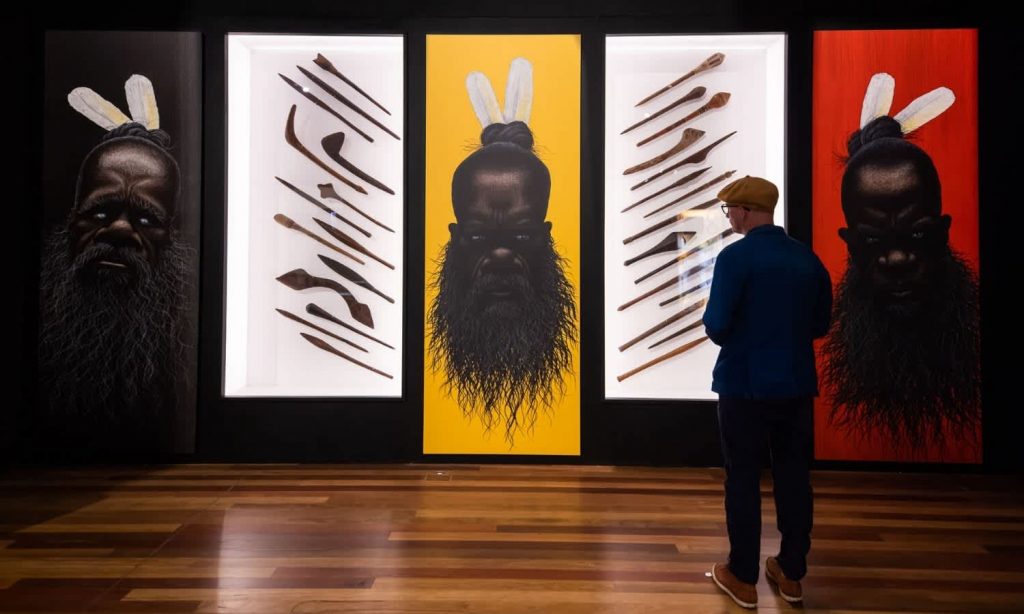
New South Wales
Sydney is home to the vibrant Aboriginal culture of the Gadigal peoples of the Eora Nation who are the Traditional Custodians. There are about 29 clan groups of the Sydney metropolitan area, which are referred to collectively as the Eora Nation.
New First Nations exhibition at the Australian Museum
Housing more than 40,000 Indigenous cultural objects and contemporary artworks from across the country, the Australian Museum in Sydney’s CBD boasts one of the most significant Aboriginal and Torres Strait Islander collections, with brand new acquisitions featured in the groundbreaking Unsettled exhibition. On display until 10 October 2021, this powerful exhibition features more than 80 significant cultural objects and over 100 contributions by First Nations people across the country, uncovering the untold history of Australia’s foundation, the lasting impact of colonisation and first-hand stories of devastation, survival and the fight for Indigenous sovereignty. The museum also offers the opportunity to gain a deeper understanding of Unsettled through a tour with their knowledgeable First Nations guides.
National Indigenous Art Fair
Taking place from Saturday 3 to Sunday 4 July 2021 at the Overseas Passenger Terminal in the Rocks, the National Indigenous Art Fair is a two-day art market and program of events which will see Indigenous artists from around Australia come together in celebration of NAIDOC Week. The event offers a unique opportunity for visitors to purchase their own unique artworks directly from Aboriginal and Torres Strait Islander artists, many of whom have travelled from remote parts of New South Wales, the Northern Territory, South Australia and Western Australia. There will also be a great program of live music, dance performances, art installations and weaving circles by Indigenous artists, along with more than 25 Blak Market vendors selling a variety of jewellery, gifts, homewares, bush food and plants.
Dreamtime Southern X
Connect with Country without even leaving the city, join a 90-minute Rocks Aboriginal Dreaming Tour (Illi Langi) to learn all about Aboriginal past and present, spirituality and connections to land and water, at the place of first contact in the shadows of both the Sydney Opera House and Harbour Bridge. Ochre is smeared onto your hand at the start of the tour and you’ll learn about the role of ochre in Indigenous ceremonies and the deep relationship between Aboriginal peoples and the land, water and seasons.
The Kamilaroi are the second largest nation on the eastern coast of Australia, Wiradjuri being the largest. Their nation covers 30,000 square miles of fertile soil, running rivers and streams. Their language is Gamilaraay and their lifestyle is to co-exist with, and maintain a balance with nature.
Yaama Ganu
Located a direct flight from Sydney or a five-hour drive from Brisbane, Moree’s Yaama Ganu art gallery displays works by artists of the local Kamilaroi Aboriginal peoples, renowned for their ambitious colour palettes in linear and dot painting styles, as well as a range of works created in Aboriginal-managed art centres around Australia.
The Gumbaynggirr people have lived on the Mid North Coast since the Yuludarla or the Dreaming, occupying land that stretches from Nambucca to the Clarence River and the Great Dividing Range. Known as the “sharing people” because their land was so abundant with food and resources that they often shared with other nations, their living culture spans across 80kms of beaches, headlands, rivers, estuaries, creeks, mountains and floodplains.
Wajaana Yaam
Take a tour with the descendants of Australia’s first paddlers in the idyllic waterways of Coffs Harbour. Wajaana Yaam is owned and operated by Gumbaynggirr/Bundjalung man Clark Webb, and offers both paddle boarding and kayaking tours that run down three serene waterways within Solitary Islands Marine Park: Coffs, Moonee and Red Rock Creeks. On the tours, guests learn about the native flora and sample bushtucker while listening to Dreaming stories connected to the surroundings.
Wagga Wagga – Wiradjuri Country
Known as the people of the three rivers, the Wambool (Macquarie), the Calare (Lachlan) and the Murrumbidgee, Wiradjuri people have inhabited modern-day New South Wales, Australia for at least 60,000 years.
Bundyi Cultural Tours
Join professional guide and Wirdadjuri Man, Mark Saddler, on a personal tour of this history-rich country in the Riverina region. On the banks of the Murrumbidgee River near Wagga Wagga, the tours, which last from 2 hours to a full day, are designed to help visitors slow down and connect with the land. Experience and learn about the land through meeting bush animals, walking down ancient pathways and river banks, and learning to speak basic Wiradjuri language.
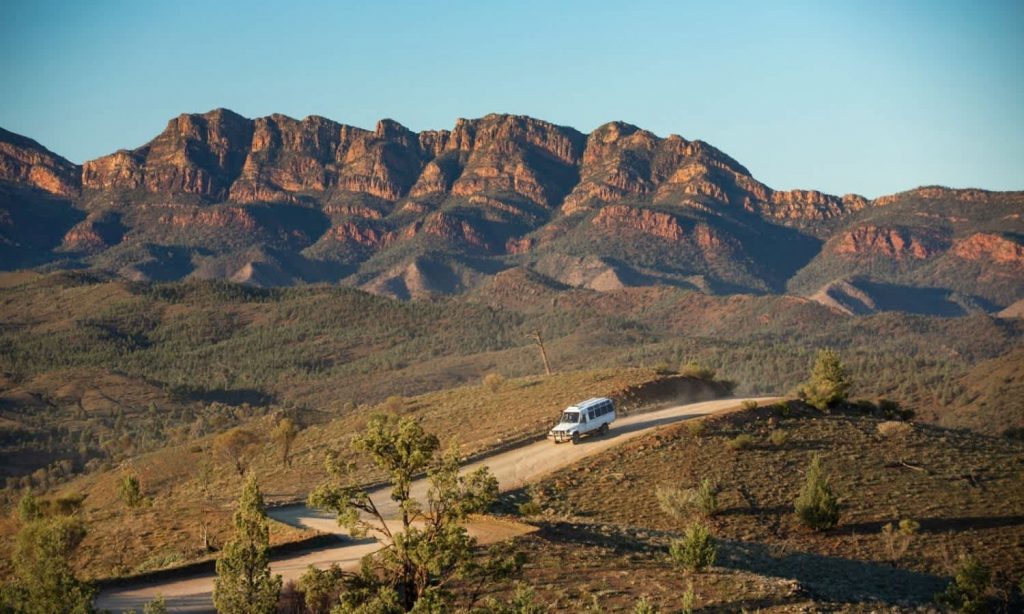
South Australia
The Adelaide Plains are the traditional lands of the Kaurna peoples, stretching from Port Broughton down to Cape Jervis. Kaurna actively manages the land and lives off the land and waterways of the region.
Tandanya
Located in the heart of Adelaide, Tandanya is a dedicated space for the cultural expressions of Aboriginal and Torres Strait Islander artists. The gallery sits on Kaurna (pronounced ‘Garna’) land, and is named after the Kaurna word for ‘place of the red kangaroo.’ A range of stunning visual arts, as well as live music and performing art programs that take place throughout the year can be found there.
Gemtree Wines
GemTree Wines, based in McLaren Vale, just 33 kilometres south of Adelaide city centre, has partnered with Senior Cultural Custodian, Karl Winda Telfer of Yellaka to share Tirkandi. Karl will share his knowledge as he takes you on an inspiring journey of Culture, Connection and Country on a tour through the Gemtree Eco-trail. The experience will continue into the Gemtree Tasting Room where you will enjoy certified organic and biodynamic, a reflection of the soil from which they came – wines grounded in earth.
APY Gallery
APY Gallery Adelaide on Light Square is one of 11 Indigenous owned and governed enterprises in the APY Collective. Featuring artists studios as well as an exhibition space, the gallery showcases a wide range of work from emerging Indigenous artists, such as paintings, punu (wood) carvings, ceramics, baskets and soft sculptures, works on paper and textiles. The gallery also acts as a platform for the artists connecting them to a wide audience and professional development opportunities.
Ikara-Flinders Ranges National Park
The Adnyamathanha people are the Traditional Owners of Ikara-Flinders Ranges National Park, including the Wilpena Pound (Ikara). Adnyamathanha means rock or hills people in Yura Ngawarla, the language of the Flinders Ranges.
Wilpena Pound Resort
Visit one of the oldest landscapes on earth, just 430 kilometres (267 miles) north of Adelaide is Wilpena Pound Resort in the dramatic Flinders Range – it’s the only accommodation within the Ikara-Flinders Ranges National Park. The resort, owned and operated by the Adnyamathanha Traditional Owners, offers a range of guided Aboriginal cultural tours that include 4WD tours to visit 550 million-year-old fossil sites and ancient rock engravings, walking tours to Old Wilpena Station and scenic flights over extraordinary Wilpena Pound, an 800 million-year-old natural amphitheatre.
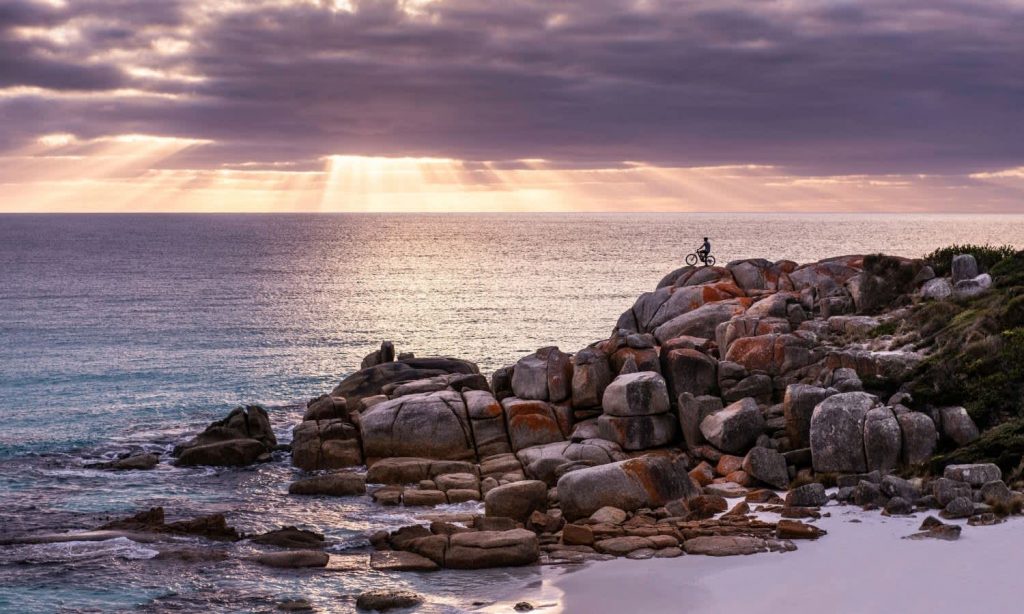
Tasmania
The palawa and pakana peoples (Tasmanian Aboriginal community) are the Traditional Owners of lutruwita, the land also known as Tasmania.
ningina tunapri at Tasmanian Museum & Art Gallery
Meaning ‘to give knowledge and understanding’, the ningina tunapri Tasmanian Aboriginal gallery in Hobart houses an exhibition that explores the journey of Tasmanian Aboriginal peoples and is a celebration of all Tasmanian Aboriginal generations. Visitors are sure to have a rich, enlightening and inspiring experience while learning about Tasmanian Aboriginal peoples, past and present.
The First Tasmanians: Our Story at Queen Victoria Museum & Art Gallery
Featuring rarely seen original objects and examining topics such as climate change, astronomy and stories of creation, craft, technology and architecture, this exhibition in Launceston, takes a different approach to presenting and exploring the history and culture of the Tasmanian Aboriginal peoples.
Wukalina Walk
Walk with the oldest living culture on a guided multi-day wukalina walk which combines culture, nature and luxury in one of Australia’s most scenic landscapes, Tasmania’s magnificent Bay of Fires wilderness area. Stay in bespoke luxury accommodation, meet palawa elders, hear creation stories and learn about traditional medicines and foods, feast on mutton bird, wallaby and doughboy dumplings (as well as plenty of seafood and some of Tasmania’s finest wines), try kelp and reed basket-making, learn how to belt out a tune on the clapsticks, and see kangaroos, wallabies, wombats, possums, whales, dolphins, and birdlife including black swans, sea eagles and arctic terns.
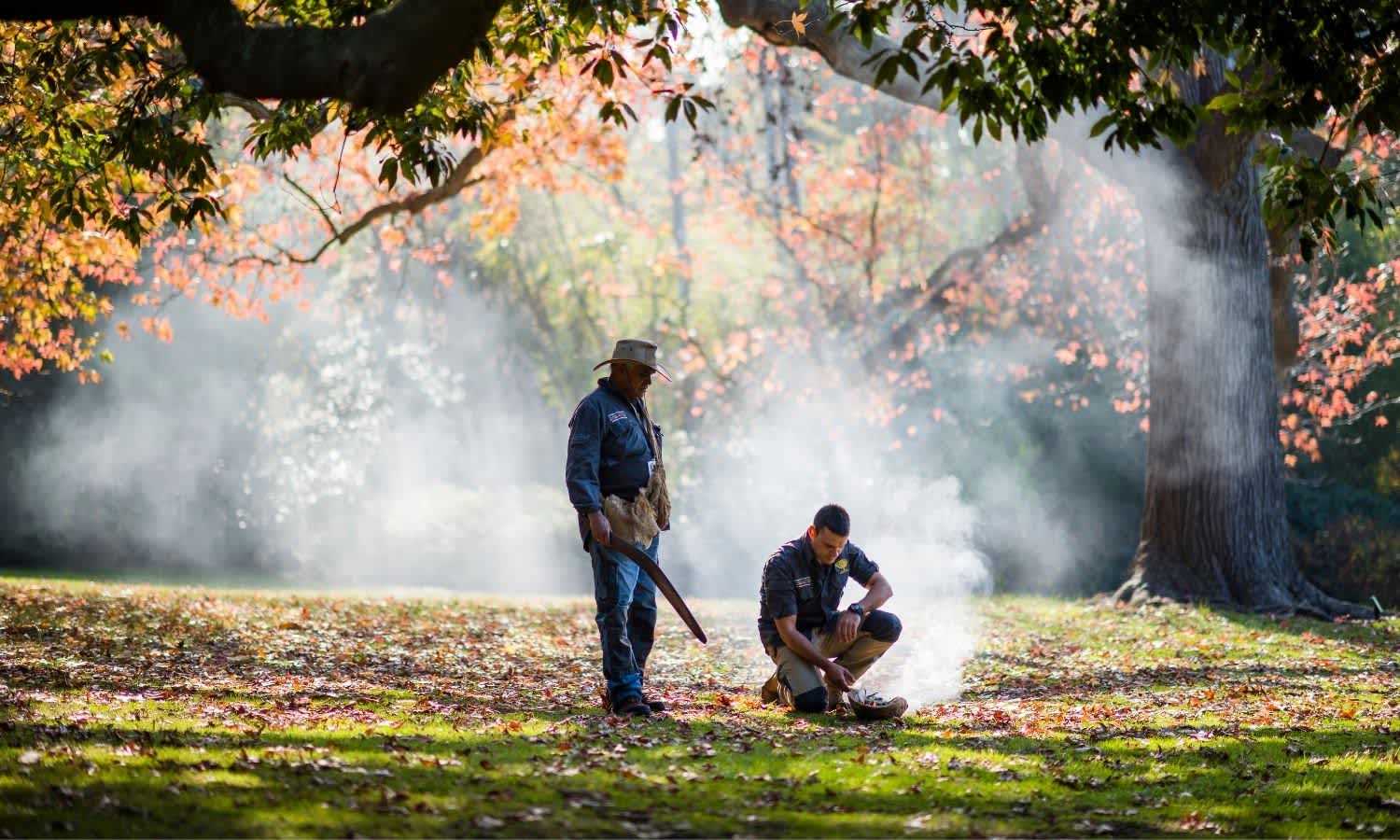
Victoria
The Bunurong Boon Wurrung and Wurundjeri Woi Wurrung peoples of the Eastern Kulin Nation are the Traditional Custodians of the land we now call Melbourne. For the Kulin Nation, Melbourne has always been an important meeting place for events of social, educational, sporting and cultural significance.
Bunjilaka Aboriginal Cultural Centre at Melbourne Museum
Containing one of the most significant Aboriginal cultural collections in the world, the museum was designed in collaboration with Aboriginal people including Melbourne’s traditional owners, the Boon wurrung and the Woi wurrung. Meaning ‘the place of Bunjil’ (the ancestral wedge-tailed eagle, a creator spirit, the centre offers an intensive, interactive and often moving immersion in Aboriginal culture, covering art, storytelling, and powerful multimedia experiences.
Aboriginal Heritage Walk
In Melbourne’s oasis that is the Royal Botanic Gardens Victoria – said to be one of the world’s leading botanic gardens – visitors can tour the ancestral lands of the Eastern Kulin Nation, led by an Indigenous guide on the Aboriginal Heritage Walk. Beginning with a traditional smoking ceremony, visitors will deepen their understanding of Aboriginal customs by learning about traditional uses of plants for food, tools and medicine.
Aboriginal Walking Tour
In bustling Federation Square, the Koorie Heritage Trust is dedicated to promoting and supporting the living culture of south-east Australia’s First Peoples. Visit the centre to see the latest Indigenous art exhibition on display, the huge permanent exhibition of photography, oral history and artefacts, or, if time allows, embark on a two-hour guided Aboriginal Walking Tour, taking in the iconic Yarra River that threads through Melbourne, and sites of cultural significance along the way.
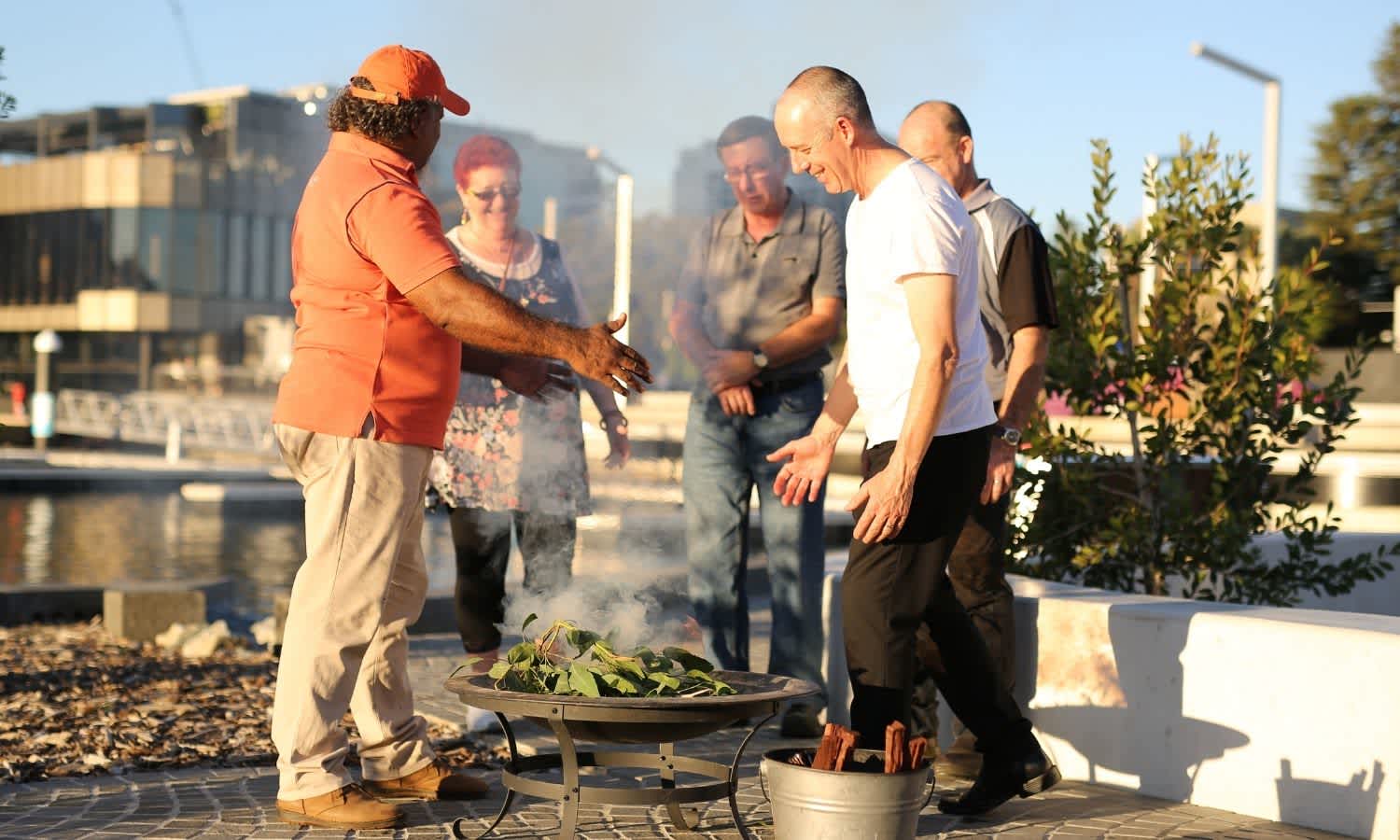
Western Australia
The Noongar peoples are the Traditional Owners of south-west of Western Australia. Whadjuk is one of 14 clans of the Noongar nation, and Whadjuk is the name of Traditional Owners of the place we now call Perth. The South West Boojarah region refers to the Wardandi and Bibulmun/Piblemen Noongar clan groups, and encompasses Margaret River and Manjimup.
Japingka Aboriginal Art
One of the most impressive collections of contemporary Aboriginal and Torres Strait Islander art for sale can be found in the port city of Fremantle or Waylyup as it was known by the Noongar people. Located in a 19th-century warehouse, visitors will discover an impressive ground-floor display of works by leading Aboriginal artists from across Australia, as well as two feature galleries upstairs presenting new shows every month, including exhibits by emerging Indigenous artists.
Go Cultural Aboriginal Tours & Experiences
Walter McGuire at Go Cultural Aboriginal Tours & Experiences walks visitors through the heart of Western Australia’s capital city, Perth. He paints word pictures of the natural scene covered over by modern development, revealing the practices and traditions of his Whadjuk peoples. The Elder explains the strength of the spiritual connection Aboriginal peoples have with the land, and why it continues to resonate, even among office blocks. He talks about the hunting and gathering of native foods from wetlands that once made up the city centre, and shares Dreamtime stories that connect to Perth’s meandering Swan River – a life force both in the past, and now.
Koomal Dreaming
South-west of Perth, in the Margaret River wine region Josh Whiteland of Koomal Dreaming likes to combine culture and place with his enlightening experiences; he plays didgeridoo inside the spectacular Ngilgi Cave amphitheatre, he walks through bush in search of medicinal plants, he demonstrates traditional fire making, he guides walks along the breathtaking Cape to Cape track or takes people fishing for salmon, herring and bream inside stunning Meelup Regional Park. With tours beginning again in late spring 2021, it’s a fascinatingly different way to experience a region best known for exceptional wine.
Yamaji Art Centre
Located in Geraldton, mid-west Western Australia, the Yamaji Art Centre is completely Aborginal owned and operated. With a focus on sustaining maintenance and arts practice while creating economic benefit, the centre provides services to support Aboriginal artists living in the Lower Murchinson region of Yamaji Country.
The Bardi Land and Jawi Island
People of the Dampier Peninsula retain a particularly special relationship with their land and sea that encompasses in-depth knowledge of bush food, medicine and traditional hunting and fishing practices in the areas.
Borrgoron Coast to Creek Tours
Terry Hunter’s Borrgoron Coast to Creek walking tour is a two-hour transportation into another world – one that exists parallel to our own, yet is unknown to most non-Indigenous people. Exploring the mangrove-rich landscape surrounding Cygnet Bay Pearl Farm, where red earth and saltwater meet, reveals as much about Terry’s day-to-day life as it does his Aboriginal culture and the local pearling trade his family has been part of for four generations.
Read more stories from The Latch and subscribe to our email newsletter.


